
The Galapagos Islands have been on our dream list as long as we’ve been traveling. But there’s more to Ecuador than those spectacular islands, so we decided to build in time to explore the mainland as well. During our two-week Ecuador itinerary, we learned about the history of Quito, visited a bustling market, wandered the cloud forest, and marveled at every living thing on the continent and the islands.
2 Weeks in Ecuador and Galapagos Islands Itinerary
Day 1 – Arrive in Ecuador
The first day of our trip was dedicated to travel. We were able to fly right into Quito, arriving near midnight. A 45-minute drive took us to our accommodations at La Casona de la Ronda, a boutique hotel in the heart of Quito’s historic district.
Day 2 – Explore Quito
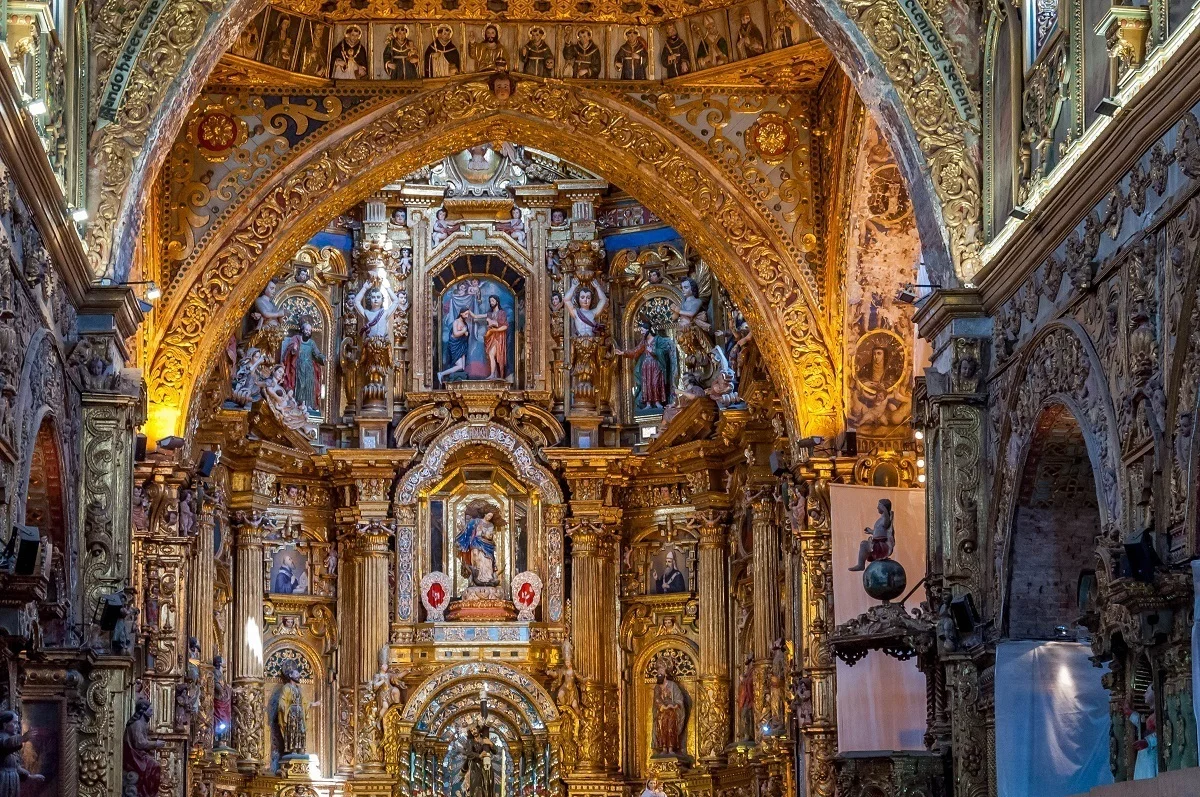
Our first day in Ecuador started early with a walking tour of Quito. We explored Independence Square (the city’s main plaza) and the Cathedral of Quito. Along with a look at the city’s street art, we visited the Church of San Francisco, a 16th-century church with a gleaming, golden interior, and the 17th-century chapel of La Iglesia de El Sagrario.
In the afternoon, it was time to make our way out of the city to the cloud forest of Mindo. On the western slopes of the Andes, the biologically diverse area is full thousands of species of plants and animals. Although it’s just two hours outside of Quito, it feels like the middle of nowhere and is a great location for people interested in wildlife – especially birds.
On our way, we visited Mitad del Mundo, a monument that marks the location of the equator. The quirky but ultimately skippable stop includes a few cultural exhibits and demonstrations that show the impact of the magnetic field on either side of the equator.
In Mindo, we spent the night at the Sachatamia Lodge where we experienced our first traditional Ecuadorian drink, canelazo. The hot, spiced, alcoholic beverage, which is traditionally served in the Ecuadorian highlands, tastes like fall and was a great introduction to all the tasty things we would eat and drink in Ecuador.
Day 3 – See the Cloud Forest of Mindo
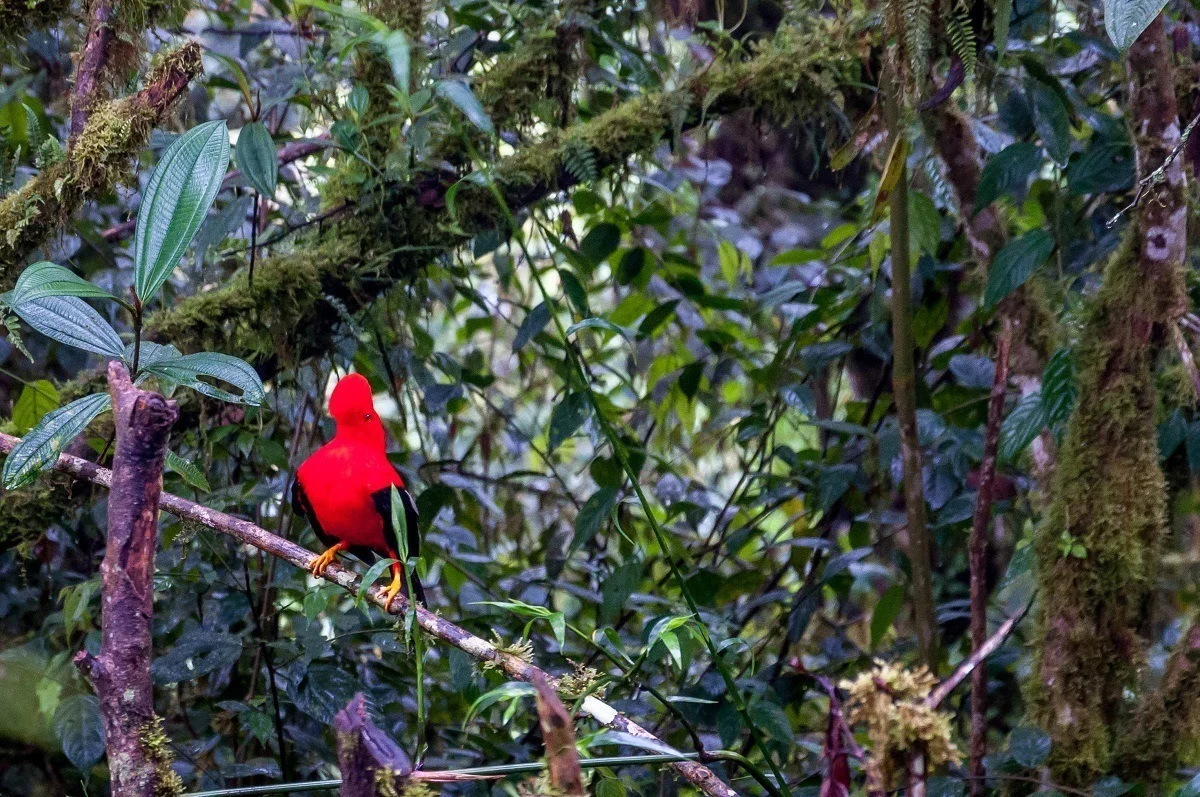
The second day of our Ecuador itinerary began with a very early morning wake up call to visit one of the prize birds of the cloud forest, the Andean Cock of the Rock. The brilliant red creature is a bit elusive but pretty spectacular when it shows up.
After looking for other birds on the grounds of the refuge we visited (and discovering that this type of birding isn’t totally our thing), we got to indulge in a traditional breakfast surrounded by the peace of the forest.
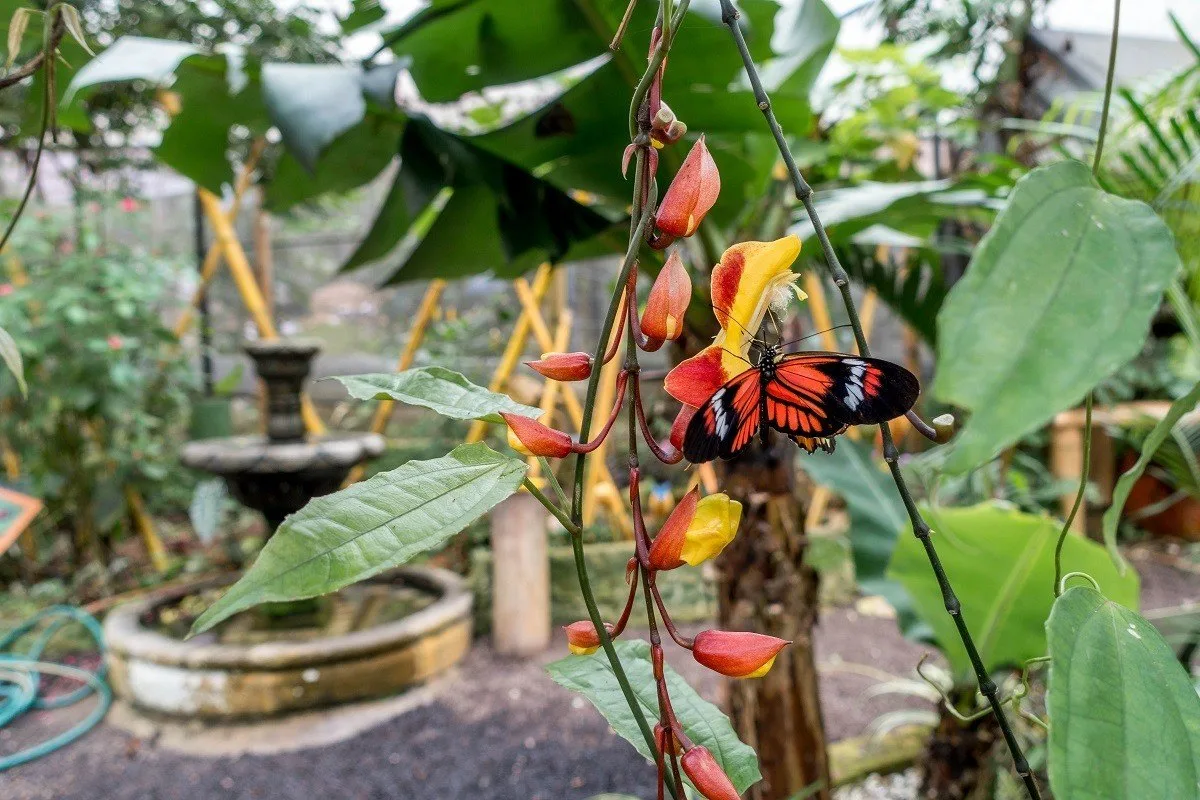
Later in the day, we visited a spectacular butterfly farm in Mindo town where we saw dozens of different species, including electric blue varieties and types that produce a gleaming gold cocoon. We didn’t know what to expect from the farm, but its size and the variety of species there made it well worth a visit.
After the butterfly farm, we headed to a nearby zip line and soared over the Andes. It was quite an introduction to zip lining! We spent our second night at the Sachatamia Lodge.
Day 4 – Visit Otavalo Market and Cotacachi
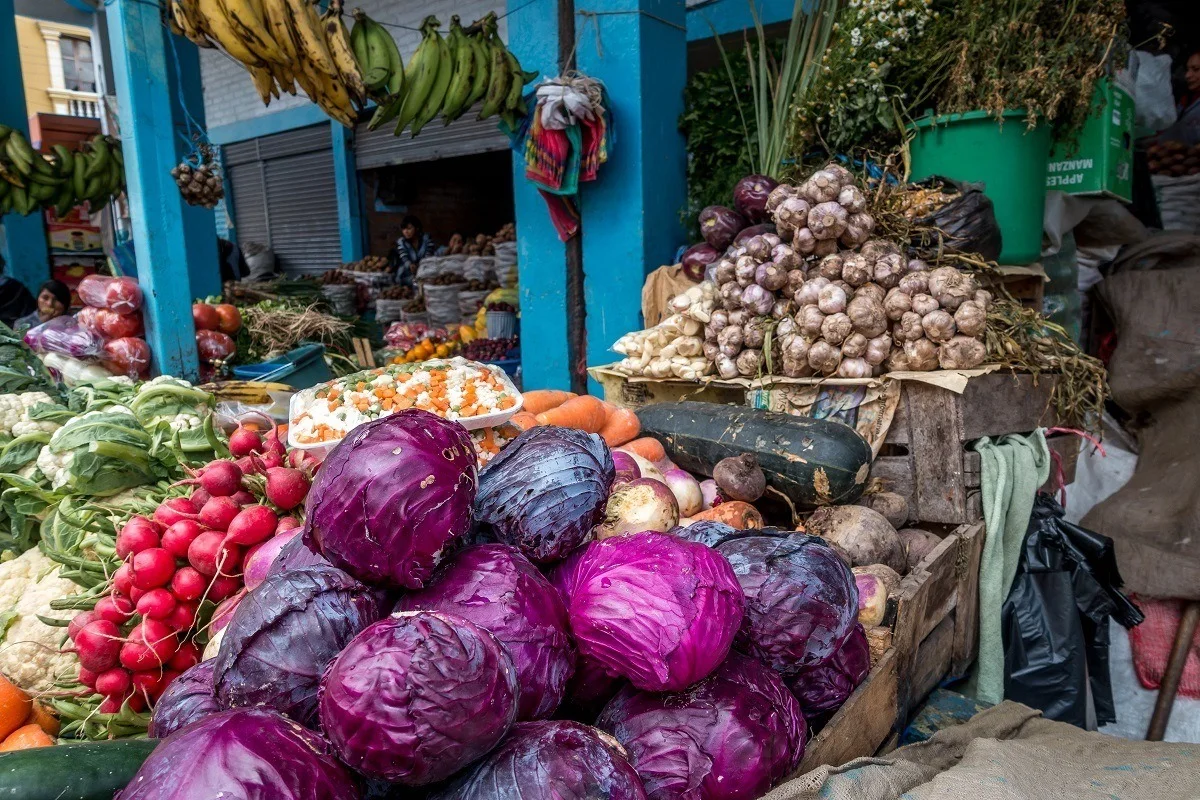
The Otavalo market on Saturday is one of the most colorful places we’ve ever seen. Tables are piled high with textiles and goods in every color, alongside displays of fruits and vegetables, many of which are unique to the region. As we wandered among the goods and taste tested some of the offerings, we watched native Otavaleños in their traditional dress shop and socialize. It was a delicious cultural experience.
In the afternoon, we visited the beautiful Cuicocha Lake, sitting in the crater of the active Cotacachi volcano. The lake is considered sacred, and there is a yearly celebration of traditional rituals on its shores.
We spent the night at the historic Hacienda Pinsaquí, which dates back to 1790. The renowned general Simon Bolivar used to stay in its rooms as he journeyed between Ecuador and Colombia. Today, local musicians entertain the guests, and artisans bring their traditional crafts to the vast grounds.
Day 5 – See Antisana Ecological Reserve
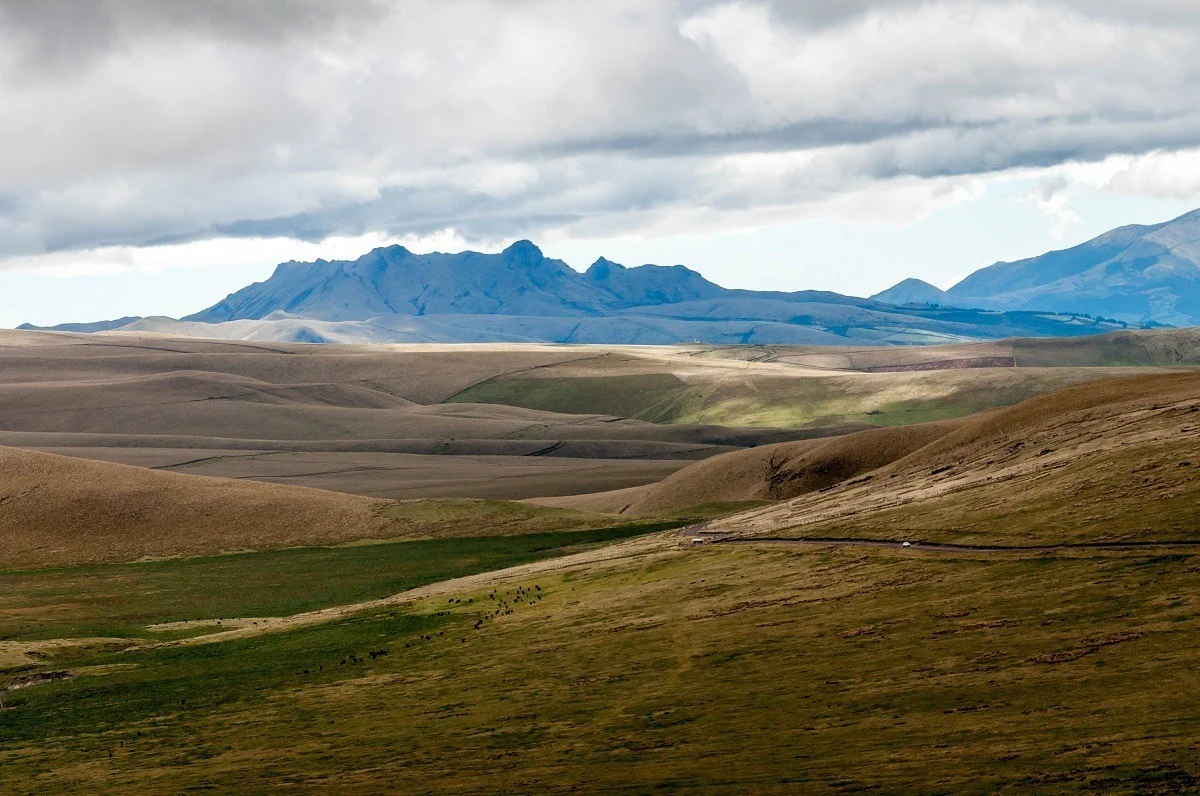
In the morning, we headed south to the Antisana Ecological Reserve, a huge area of 460 square miles that is home to amazing wildlife. We marveled at the striated colors of the landscape surrounding the Antisana volcano and the beautiful Mica Lake and watched as Andean Condors soared overhead.
As much as we discovered we don’t love spending hours waiting in one spot for a bird to appear, encountering unique species like the condor in their natural habitat is mesmerizing.
After our adventure in nature, we made our way to the Cotopaxi Province to stay at Hacienda el Porvenir. At nearly 12,000 feet above sea level, the working ranch sits on the slopes of Rumiñahui volcano and provides sweeping views of the Avenue of the Volcanoes.
Day 6 – Explore Avenue of the Volcanoes
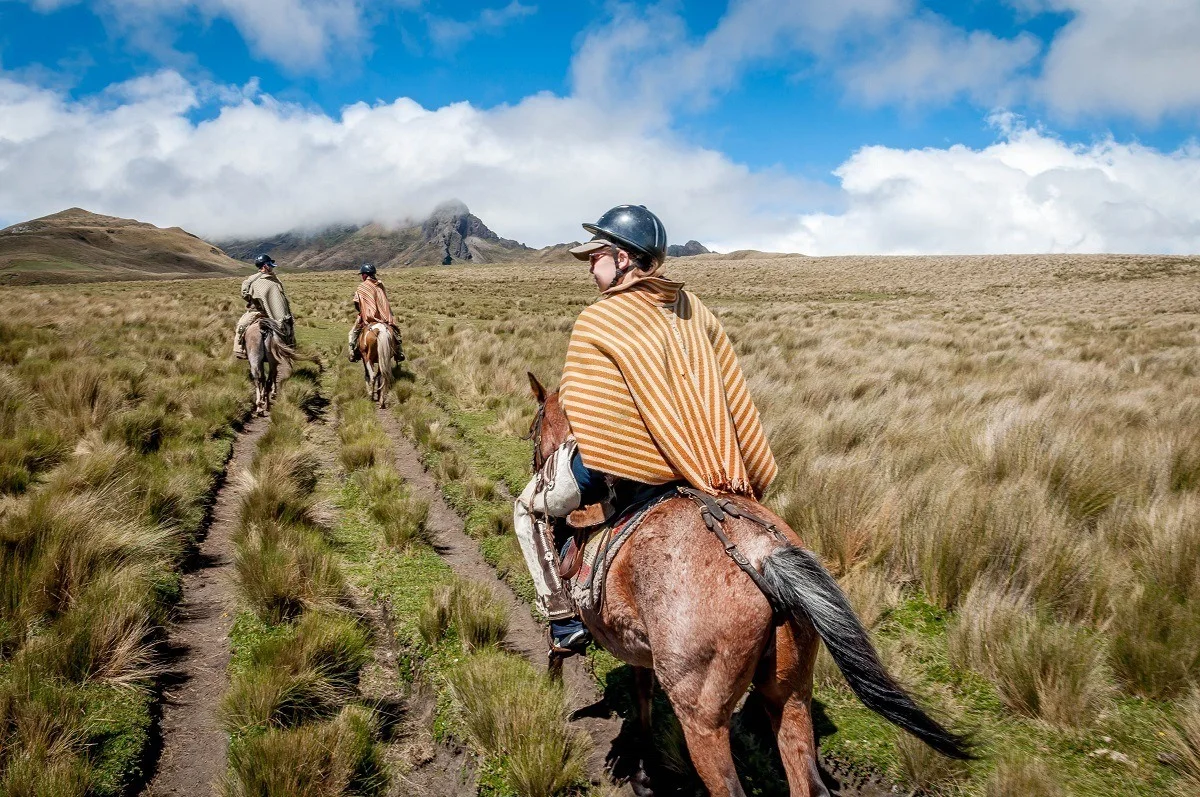
Day 6 was a first for us – a horseback ride through the Avenue of the Volcanoes. With the help of the chagras (Ecuadorian cowboys) from Hacienda el Porvenir, wee suited up in chaps and ponchos and made our way out into the foothills. We rode for several hours, entranced by the landscape from the whipping tall grasses to the peaks of the volcanoes surrounding us, including Cotopaxi, the world’s highest active volcano.
The afternoon meant it was time to return to Quito and another night at La Casona de la Ronda while we prepared for our upcoming flight to one of the most unique places in the world – the Galapagos Islands!
Days 7-13 – Cruise the Galapagos Islands
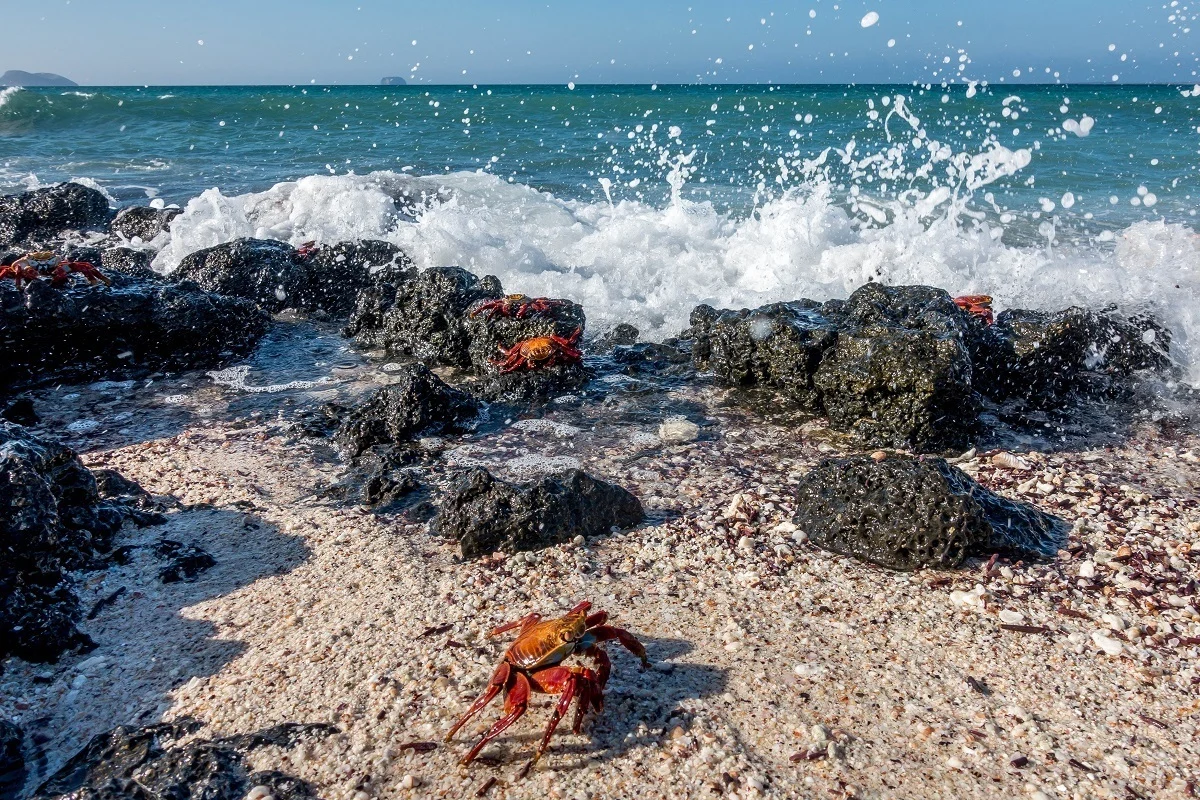
The second week of our Ecuador itinerary was a dream come true – seven days sailing in the Galapagos islands. Each day included one (or more) walks on an island to see unique species of animals and plants that generally don’t exist elsewhere. We also snorkeled every day.
The climate in the Galapagos was much different from the cool mountains, which made for an adventure in packing — check out our recommendations for what to take. We were particularly glad we brought our own snorkel gear (be sure to check out our guide for travel snorkel equipment).
Day 7 – Santa Cruz Island
We flew to Baltra and boarded our boat, The Beagle. Immediately, we were off to Las Bachas, a white sand beach on Santa Cruz Island. Our first encounter with the animals of the Galapagos included flamingos, iguanas, and the bright red Sally light-foot crabs that the islands are famous for.
Day 8 – Genovesa Island and Darwin Bay
We began the day with a very early journey to Prince Philip’s Steps on Genovesa Island. As we walked, we saw just about every kind of bird you could imagine. From Nazca boobies to short-eared owls to black frigate birds with their red inflated pouches, they all nested together on this somewhat barren part of the island.
A mid-morning snorkel brought our first look at the underwater world of the Galapagos, including dolphins and a shark. Our late afternoon visit to Darwin Bay brought even more animals.
Day 9 – Santiago Island
An overnight journey found us in James Bay on Santiago Island by morning. The black beach had tidal pools, marine birds, and iguanas that nearly matched the color of the sand. There were more sea lions than we could have ever imagined, and we spent what seemed like hours watching them sun and swim just a few yards from us.
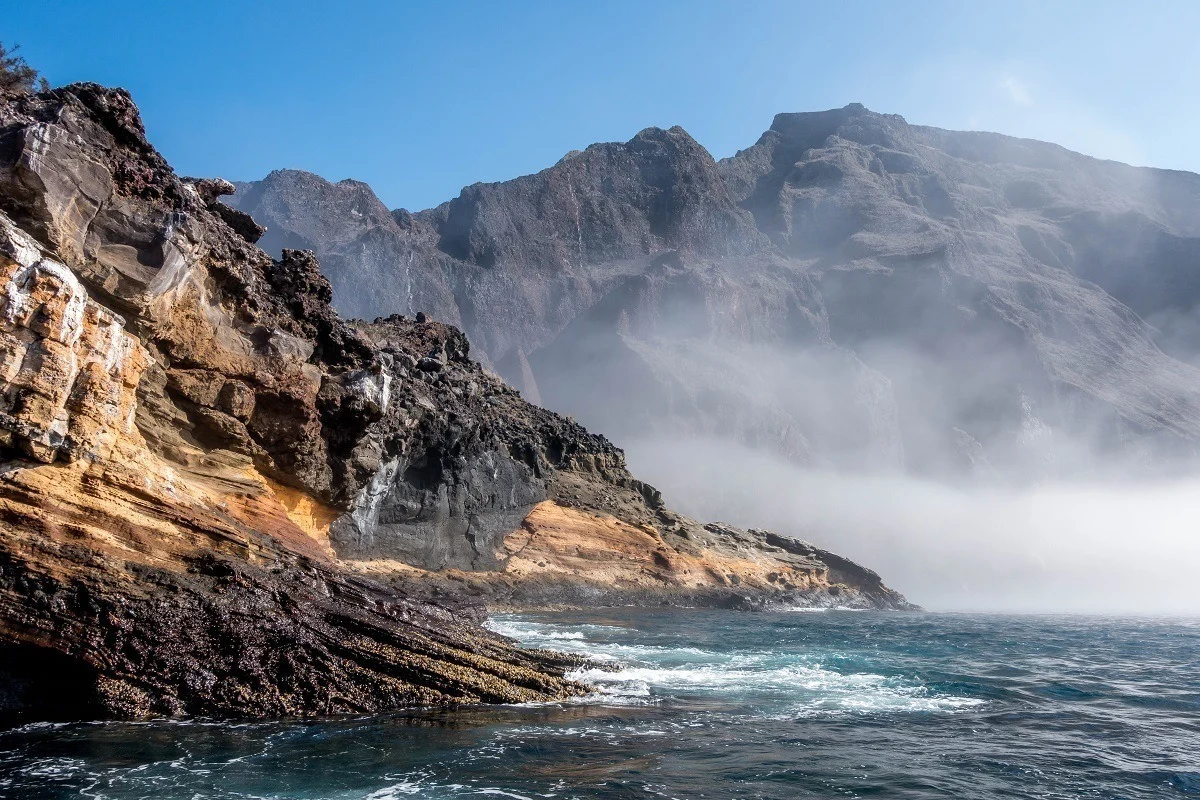
Day 10 – Punta Vicente Roca
The cliffs and jagged rocks of Punta Vicente Roca rise majestically from the ocean. These striking outcroppings on Isabela Island are home to iguanas, penguins, seals, and the famous blue-footed booby. Exploring the area in our panga (like a small fishing boat), we got a unique view of the land and all its animals.
The afternoon snorkel introduced us to some playful sea lions and zooming penguins. We also saw marine iguanas underwater for the first time along with more sea turtles than we could count. The late afternoon walk showed us graffiti left by whalers, pirates, and others who stopped here in the late 19th and early 20th centuries.
Day 11 – Fernandina Island
The lava landscape of Fernandina Island was dotted with groups of marine iguanas. The black lizards blended in the with ground, sunning themselves in piles on the hot land. In the afternoon, we met our first tortoise in the wild. In the afternoon, we climbed over lava flows at Punta Moreno to see a variety of birds.
Days 12 & 13 – Isabela Island
The day began with a visit to a giant tortoise breeding center designed to preserve some of the Galapagos’ most renowned residents. Afterward, we visited the Sierra Negra volcano, the second largest volcanic crater in the world. In the evening, we briefly visited the town of Puerto Ayora for a bit of souvenir shopping.
The next day, before boarding our flight to Quito, we visited Los Gemelos–twin sinkholes surrounded by forest. Once back in Quito, we spent a final night at La Casona de la Ronda before returning home.
